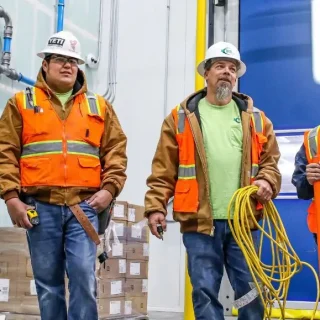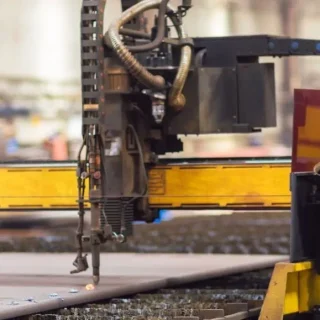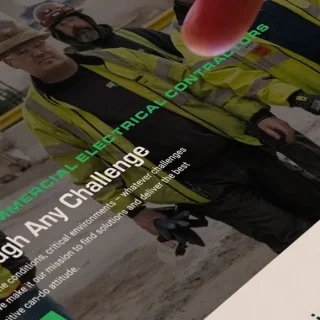Running a small-to-medium-sized business often forces you and your team to switch between many hats and can leave you feeling there aren’t enough hours in the workday. Often the biggest timesink culprits are frequent, slow, and ineffective meetings. If you’re looking to increase your business’s efficiency and be more productive, here are some tips for running fewer, faster, and more effective meetings.
What Makes a Productive Meeting?
According to Fuze, ineffective meetings waste an estimated $37 billion a year. While wasting money is often demonized in business, meetings often receive a free pass. There is a normal expectation that meetings are wasteful but a necessary evil of doing business. However, that doesn’t need to be the case.
The first step to improving your business’s meeting culture is to avoid running meetings without a clear purpose. To quote Neil Patel,” no purpose, no meeting.” So then, it’s important to qualify what does and does not count as a good reason for conducting a meeting.
What Isn’t a Meeting?
- A presentation
- A status update
- Gaining or disseminating information
- Gathering feedback
Even brainstorming ideas is not a meeting. But, selecting the best idea(s) from your collective brainstorming and deciding how to implement them IS a meeting.
The Essential Basics of Effective Meetings
- Meetings must have a clear and defined purpose
- Meetings provide a forum for critical stakeholders to discuss and ask questions
- Meetings must deliver a tangible result such as a decision/action plan
More Effective Meetings Through Environment
Everything from laptops to lighting can affect your meeting productivity. Here are few tips to keep the energy in your meetings strong and participants focused.
What kind of lighting do your meeting rooms have — artificial or natural? Studies have shown that primarily using artificial lighting can adversely impact productivity compared to natural lighting. Natural light is energizing and helps increase our cognitive performance without the fatigue triggered by artificial light.
Avoid combining meals with your meetings. While no one likes to work on an empty stomach, even the minor distraction of eating a meal detracts from meeting engagement. Instead, offer sweet or salty snacks at the table and provide accessible water to keep everyone hydrated.
Other distractions include electronic devices: phones, tablets, laptops, etc. When you have a device in your hand, the desire to multitask increases exponentially; although these devices can be helpful, their usefulness often don’t outweigh the high temptation of distraction.
Many people use electronic devices to take notes; however, research finds that writing notes by hand helps people learn faster, re-collect information better, and more thoroughly understand the topics discussed.
Sometimes it can be challenging to get discourse started in a meeting. Collaboration is one of the key strong points of meetings, and you can encourage discussion by the arrangement of your meeting room. Try a more collaborative seating arrangement than two lines of people sitting across a long table. Semi-circle and full circle seating arrangements provide an environment that is more conducive to discussion. With collaborative arrangements, like King Arthur’s Round Table, there is less emphasis on seating hierarchy, allowing everyone to feel open to participating, and encourages ideas to flow more freely.
If you really want to change your environment, try having your meeting someplace other than your conference room. Finding a different space in the office or outside the office can help people be more attentive and engaged in the discussion.
Pre-Meeting Tasks
Staying on task is vital to running a more effective meeting. The best way to stay on task in your meetings is to create a meeting agenda beforehand. This schedule will guide your meeting and help you focus and prioritize what needs to be covered in your meeting’s allotted time. Your agenda should consist of no more than one to three closely related topics. And while it’s tempting to add topics to your meeting, it is often better to respect the attendees’ time.
Your meeting agenda should also include a definitive start and end time for your meetings to help you stay on track; if you do complete your agenda before the scheduled end time, congratulations! Your team was more productive than expected, so don’t be afraid to end the meeting early or release participants from the discussion that don’t have additional questions or concerns.
Best practices for meeting agendas also include sending the finalized agenda to meeting attendees 24 hours before the meeting to review, make notes, and communicate any necessary changes or updates before the meeting starts. The same applies to meeting materials you intend to review and discuss during the meeting. Sending your meeting materials beforehand ensures your meeting time is spent making progress with new input and questions instead of absorbing the information for the first time.
Who to Include and When to Hold Your Meeting
Have you considered which days are the most optimal for your meetings? Monday morning meetings are common under the belief that they will guide the rest of the workweek. However, most employees spend the start of their week handling tasks leftover tasks from the Friday before and answering emails that came in over the weekend.
It may not be surprising then that Friday afternoons pose a similar issue. By Friday afternoon, many prospective meeting attendees are busy finishing their weekly tasks and communication before the weekend begins. Often the middle of the week (Tuesday, Wednesday, Thursday) offers the best days to host a meeting, with Thursdays around mid-morning (9:30 AM) or mid-afternoon (2:30 PM) considered the ideal meeting times.
Who needs to attend your meeting? Meetings can often suffer from a bloated attendee list. Larger meetings not only slow the discussion and momentum of a meeting, but they can also keep unnecessary attendees from spending their time in more productive ways. To keep the meeting discussion fast and effective, trim your meeting list down to only include the people you truly need. Fewer attendees are better than too many.
Amazon CEO Jeff Bezos follows the “two-pizza team rule,” making meeting teams no larger than what two pizzas can feed (typically less than ten attendees). With this rule, your discussion won’t slow due to the number of attendees, and everyone can easily participate in the discourse.
Prioritize your meeting attendance list on key stakeholders and critical subject matter experts. If you need to involve someone for only a portion of the meeting to answer questions and provide insight, ask them to be on standby, and release them when the meeting moves to the next topic.
Effective Meeting Roles
Whether someone is leading the meeting or simply participating, the key is to keep your attendance lean, so everyone involved plays an important role. To increase the effectiveness of your meetings, consider formally appointing these roles for your meetings.
The Chairperson
The Chairperson is the meeting leader. The person who fills this role will develop the meeting agenda, guide attendees through the agenda during the meeting, and keep everyone on task. They will also ensure all attendees have the opportunity to provide input and ask questions on each meeting topic. Lastly, the Chairperson is responsible for opening and closing the meeting.
The Time Tracker
The Time Tracker plays a vital role in ensuring that your meeting runs efficiently by managing the time spent and inform the Chairperson if an agenda topic begins running over its allotted time. They can also help distribute meeting materials and operate the AV equipment.
The Secretary
The Secretary is one of your most crucial meeting attendees as their work will help with post-meeting development. Their focus is to record meeting minutes, tabled meeting items, and fallout tasks. The Secretary should follow the end of the meeting by sending out a synopsis of the meeting, tabled items, and fallout task assignments.
Closing Effective Meeting
How long should a meeting last? For extensive and in-depth discussions, keep it movie-length! According to Harvard Business Review, “Very few business meetings achieve anything of value after two hours, and an hour and a half is enough time to allocate for most purposes.” Two hours is the maximum length an in-person meeting should last. Virtual meetings often require more concentration to maintain focus, so consider capping your virtual meetings to a shorter time of one and a half hours.
However, for a smaller meeting, you likely only need half an hour. Shorter 30-minute meetings are less daunting and force you to prioritize topics and keep the discussion quick and direct.
When your Time Tracker announces the end of the meeting is coming up, start to prepare for the next phase of your project. Review your agenda to ensure you created actionable tasks based on the discussion and give clear direction to task owners with clear time frames. Everyone understands the expectations following the meeting’s end.
Once the meeting is over, have the meeting Secretary distribute notes, minutes, and task details discussed. Share this information with all meeting attendees, plus employees outside the meeting assigned tasks. When necessary, ensure outside employees know who to reach out to if they have questions about their assigned tasks.
Meetings Won’t Be Replaced Any Time Soon
Meetings are necessary to keep projects and team members coordinated and running smoothly. They may not be going away, but there are steps we can take in our businesses to run meetings more smoothly, efficiently, and effectively.
Organized and effective meetings help your team feel energized and confident in their next steps. By implementing these tips, you can have fewer, faster, and more effective meetings in the future that will provide value and grow your productivity.








